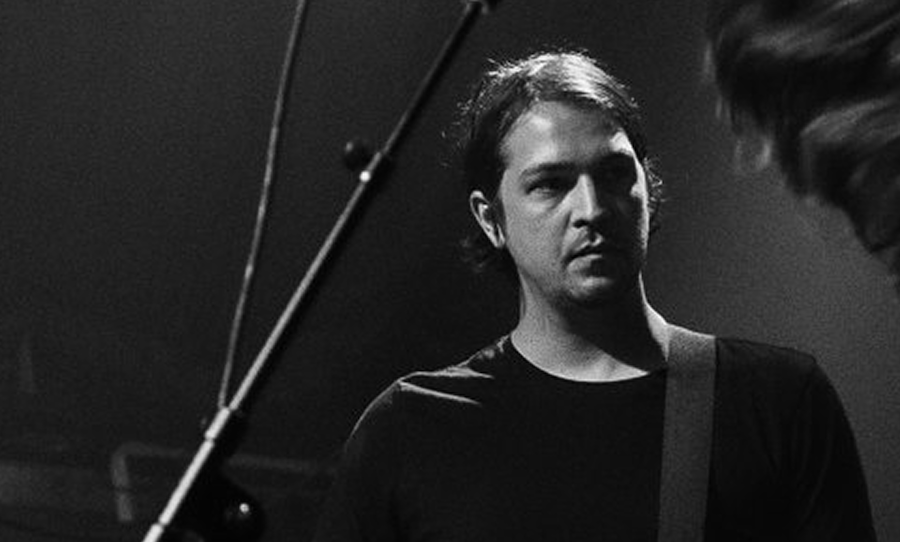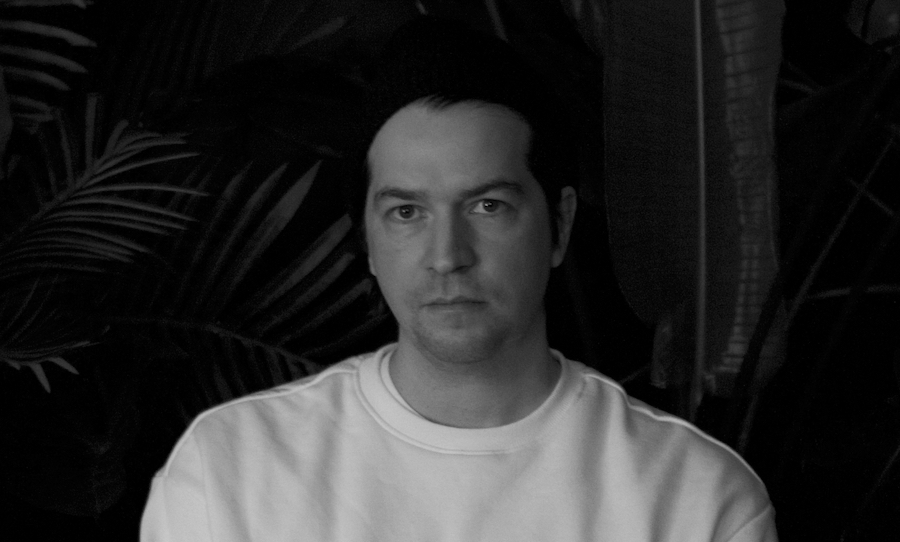‘I wanted to find a way to sort of pull together all that emotion and have it live in a song rather than in me’
Tropigloom’s Believe It emerges from the darkest corners of human experience, born directly from frontman Andrew Roys’ brush with death that left him comatose for two weeks.
The track serves as a disorienting audio memoir of consciousness suspended between worlds.

The production hovers in this unique space – not quite grounded but not fully ethereal either – reflecting how Roys felt disconnected from his own body during recovery.
The reverb-soaked guitars and ghostly vocals drop you right into that foggy territory between being conscious and not.
Believe It takes Roys’ personal nightmare and turns it into something we can all feel, all while mapping out his journey back to himself, capturing that weird, almost trippy experience of returning to a life you almost lost.
We’re hanging with Roy today to chat about this wild journey, how Believe It came together, and what it’s like making music after staring down mortality.
HAPPY: Congratulations on your single release, I understand the song stems from your near-death experience. Could you tell us what happened?
TROPIGLOOM: Thank you! It all started with a stomach ache in the afternoon which turned to nausea by the evening.
I woke up with a fever the next day which stuck around for a few days.
That’s the last I can clearly remember before waking up paralyzed on life support in a hospital room.
I had apparently woken up after those first few days shaking uncontrollably.
I had become delirious and was hallucinating. I don’t remember any of it.
I was like that for about a week while my body slowly shut down.
What was happening was that for some reason my antibodies were attacking me, causing my spinal cord and brain to swell up, which eventually put me on life support and in a coma.
HAPPY: Believe It is clearly deeply personal. Can you walk us through the emotions and thoughts you were processing during that time, and how they shaped the song?
TROPIGLOOM: I’ve been processing fear and confusion after the whole incident.
I wanted to find a way to sort of pull together all that emotion and have it live in a song rather than in me.
I think by sitting with the experience and resonating with the memory of what I went through and then transferring that feeling to another form has made it easier for me to let it go.
HAPPY: Turning such a harrowing experience into music must have been challenging. How did you approach translating something so intense and personal into a sonic experience?
TROPIGLOOM: I think because the experience was so profound it wasn’t that difficult to find the right sounds that I felt matched the emotion. I would essentially hold on to the feeling and go through a few chords until I felt they matched and then continued on from there matching other instruments to the feeling.
HAPPY: You mentioned being in a two-week coma. What was it like to wake up from that state, and how did it influence the themes of Believe It?
TROPIGLOOM: It was pretty wild. I was pumped with a lot of steroids and antibiotics in an attempt to stop what was happening to me and pull me out of the coma.
The doctors couldn’t figure out what it was. I had a specific treatment done that eventually pulled me out of it.
It’s hard to tell whether some of my memories are from being in the coma or coming out of it, or both. I can remember floating in a black void that felt like I was at the bottom of an ocean.
Just pure awareness. Things would float in and out, at first there were orbs with people’s faces, then experiences that I could enter into.
Waking up in the hospital was weird because it felt like a dream. Every time I woke up in the room that I was in it felt like I was in a different place.
Like I was layering realities onto this reality somehow. It was kinda like if we were sitting down for this interview inside of a pub, but from my perspective, we were on a boat in the middle of a pond.
There’s so many weird things that I experienced that it would take a while to write it all out. I’ve tried to distill some of this into Believe It.
I have another single out called Out of Body that explores this as well.
HAPPY: The track has a hazy, out-of-body feel to it. Was this intentional to reflect the disorientation of your experience, or did it emerge naturally during the creative process?
TROPIGLOOM: It is absolutely intentional. I tried to create a sense of space in the song that is also anchored in a way.
That is essentially what it felt like to be out of body at times. That I was free to float around wherever I’d like but was ultimately still anchored to my physical body.
HAPPY: You’ve cited bands like The Cure, My Bloody Valentine, and Slowdive as influences. How did their music inspire the sound and mood of Believe It?
TROPIGLOOM: One of my all-time favourite albums is Disintegration by The Cure. The whole thing feels like a dream. It’s gloomy but for me there’s a feeling of reassurance to it.
Like it’s alright to feel that way. I tried to create a similar dreamlike quality for the track.
For the others, I find they have a dreamlike quality to them as well but with an edge.
I get a feeling of being determined from it, which is why I tried to imbue that feeling into the track as well.
Once I was back to reality in the hospital, I still felt detached but very motivated to improve my health and recover from the situation that I was in.
HAPPY: Do you feel that creating Believe It helped you process or heal from your experience? How has music been a therapeutic outlet for you?
TROPIGLOOM: I think it has. I’m a pretty introspective person so I’m always trying to hone in on how something is making me feel, for better or for worse.
I’ve been playing music since a young age so it’s been my go-to outlet for expressing myself.
I feel like there’s still quite a bit for me to unpack from this experience so I’ll continue to vent it into musical form.
I’ll be going into the studio again around the end of this month to start recording an EP.
HAPPY: The song has a haunting, melancholic tone. How did you balance the darkness of the experience with the beauty of the music?
TROPIGLOOM: It’s an interesting thing to try to do. I think all of my favourite albums and songs attempt to balance the light and dark in their own way.
There’s something beautiful about being able to see the dark in the light and the light in the dark.
Not sure if I will ever fully nail it down, but I can try hovering around it.
HAPPY: What was the writing and recording process like for Believe It? Did you find it emotionally taxing, or was it more cathartic?
TROPIGLOOM: Definitely cathartic. By transferring the feeling into another medium and then letting it go has been therapeutic.
I also find writing and talking about it has helped to dilute its power too.
Recording the track was a bit of a struggle but ultimately in a good way.
I was left with a tremor in my left hand which was really bad at first but is barely there now.
I had lost a large percentage of muscle mass so I had to build up the muscles in my hands and everywhere else. Playing Guitar/ Bass/ Keys really helped there.
HAPPY: What do you hope listeners take away from Believe It? Is there a particular feeling or message you want to convey through this song?
TROPIGLOOM: I think the belief that you can overcome a situation can be stronger than you think.
I was at death’s door and came back, so there’s something to be said for that. I don’t think I’d be here though if I didn’t have a very supportive family.
They were by my side the whole way through, and I feel extremely grateful and fortunate to have them in my life.



